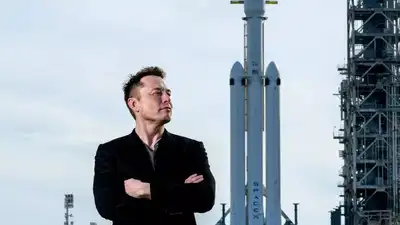ARTICLE AD BOX

Elon Musk has set an ambitious vision for the future of space exploration, predicting that SpaceX’s Starship rockets could launch more than 24 times in a single 24-hour period within the next six to seven years. This statement comes on the heels of SpaceX’s recent milestone: three
Starship launches
in just 51 hours, demonstrating rapid launch capabilities and
reusable rocket technology
. The tenth Starship test flight on August 26, 2025, successfully deployed payloads and executed a soft splashdown in the Indian Ocean, signaling a potential shift toward airline-like launch frequencies and a new revolution in
interplanetary transportation
.
Elon Musk’s recent Starship milestones
SpaceX’s tenth Starship test flight marked a significant achievement in reusable rocketry. The 403-foot-tall spacecraft launched from Starbase, Texas, tested critical upgrades including reinforced heat shield tiles and a
satellite deployment
system. Both the Super Heavy booster and Starship upper stage completed planned maneuvers successfully, highlighting the company’s progress in guidance, control, and engineering for frequent, cost-effective launches. The mission also demonstrated the feasibility of recovering and reusing large spacecraft components, a key step toward reducing the
cost of space travel
.
Musk’s prediction of more than 24 launches in 24 hours reflects a bold target for the next six to seven years. By leveraging reusable Starship technology, SpaceX aims to achieve a cadence previously unheard of in aerospace. This would allow multiple payloads to be launched rapidly, including Starlink satellites, and enable large-scale interplanetary missions. Musk’s vision also underscores his long-term goal of
Mars colonization
, emphasizing the need for highly efficient and sustainable launch operations.
Strategic Implications and Challenges
Achieving such a high launch cadence requires overcoming technical and logistical hurdles. Orbital refueling, operational readiness for crewed missions, and the durability of heat shields are key challenges yet to be fully addressed. Additionally, rapid launches could pose environmental and regulatory concerns. Skeptics like aerospace expert Carissa Christensen caution that unexpected technical issues may arise, but the recent successes of three launches in 51 hours suggest strong potential for Musk’s vision. If realized, this launch frequency could disrupt traditional space exploration timelines. Musk’s focus on reusable Starship rockets aims to drastically lower launch costs while enabling sustained interplanetary missions, potentially redefining the economics and logistics of space travel for both commercial and scientific endeavours.



.png)
.png)
.png)
















 2 hours ago
4
2 hours ago
4









 English (US) ·
English (US) ·